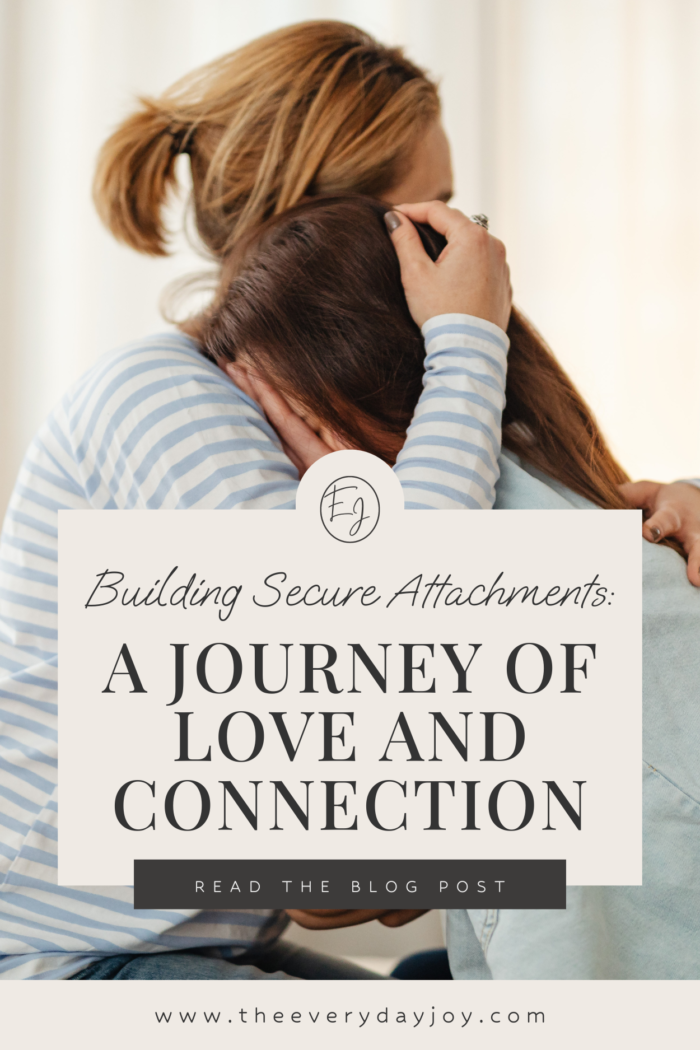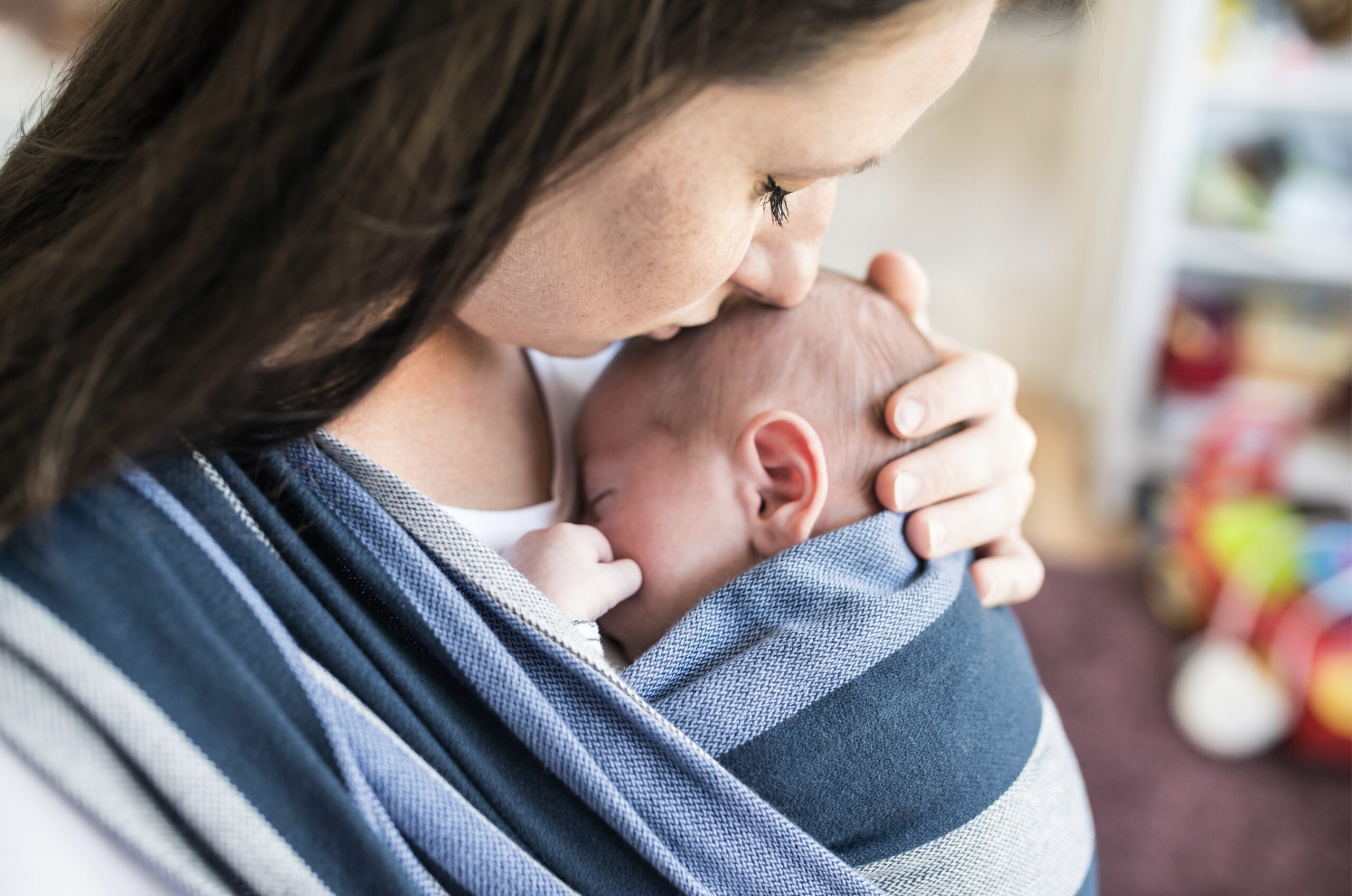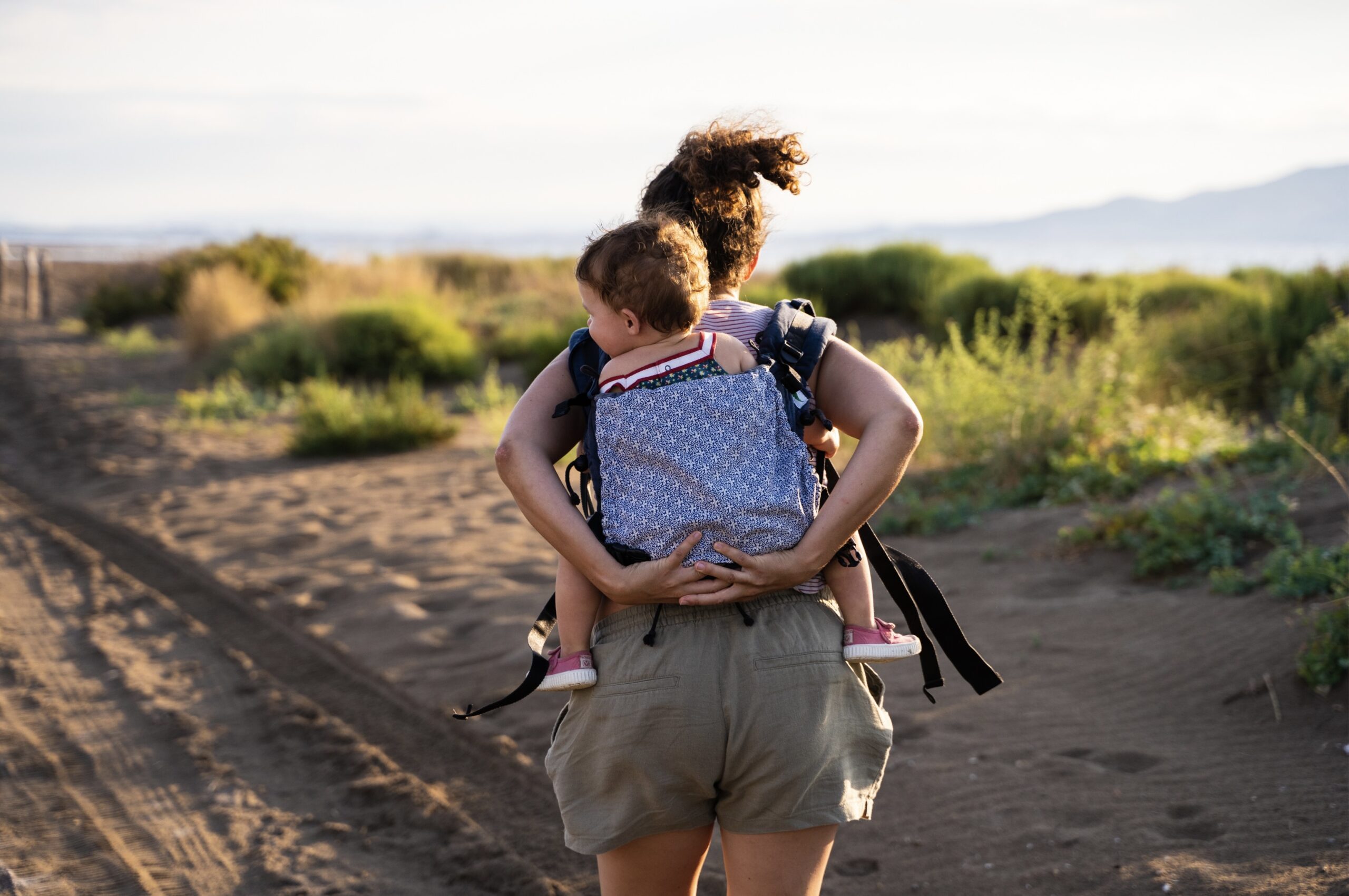Building Secure Attachments: A Journey of Love and Connection

Hey there, mama! I’m so glad you found your way here because I’m incredibly passionate about the topic we’re diving into today. I’m a new mama navigating the beautiful chaos of parenthood, armed with a background in mental health and counseling. My recent journey into motherhood was through adoption, a path that filled my heart with immeasurable joy and purpose. One cornerstone of my parenting philosophy is nurturing a secure attachment style with my son. Today, I’m excited to dive into attachment theory, explore its significance, and share practical ways to foster secure attachments with our little ones.
Disclaimer:
This blog post contains affiliate links. This means that I may earn a commission if you click on the link and make a purchase, at no additional cost to you. Please note that I only recommend products or services that I genuinely believe in and that align with the content and values of my blog. Your support through these affiliate links helps me maintain and improve the quality of my content. Thank you for your support!
What is Attachment Theory? Exploring the Four Attachment Styles
Attachment theory, developed by John Bowlby and expanded upon by Mary Ainsworth, provides insight into the bonds formed between caregivers and children during early development. These attachment bonds shape our perceptions of ourselves and others, influencing our behavioral patterns and interpersonal relationships throughout life. There are four primary attachment styles: secure, anxious-ambivalent, anxious-avoidant, and disorganized. Let’s examine each one in depth:
Secure Attachments:
Formation: Secure attachment typically develops when caregivers consistently respond to a child’s needs with sensitivity, warmth, and reliability. This fosters a sense of trust and security in the child, who learns to rely on their caregiver for comfort and support.
Childhood Examples: Securely attached children feel confident exploring their environment, knowing their caregiver is accessible and responsive. They seek comfort from their caregiver when distressed but are able to return to exploration once reassured.
Adult Examples: Adults with secure attachment styles tend to have positive self-esteem, trusting relationships, and effective communication skills. They value intimacy and are comfortable both giving and receiving support from others.
Impact on Parenting: Securely attached parents tend to be responsive, warm, and attuned to their child’s needs. They provide a secure base from which their child can explore the world, fostering independence and emotional resilience.

Anxious-Ambivalent Attachments:
Formation: Anxious-ambivalent attachment often arises from inconsistent caregiving, where the caregiver is sometimes responsive but other times unavailable or unresponsive. This leads to a sense of uncertainty and anxiety in the child, who learns to cling to their caregiver for reassurance.
Childhood Examples: Anxiously attached children may exhibit clingy behavior, seeking constant reassurance and attention from their caregiver. They may hesitate to explore their environment independently, fearing abandonment or rejection.
Adult Examples: Adults with anxious-ambivalent attachment styles may struggle with low self-esteem and fear of abandonment in relationships. They may crave closeness but also fear rejection, leading to a pattern of seeking excessive reassurance from their partner.
Impact on Parenting: Parents with anxious-ambivalent attachment styles may struggle with inconsistency in their caregiving, vacillating between moments of intense closeness and emotional distance. They may have difficulty setting boundaries and be overly enmeshed with their child’s emotions.
Anxious-Avoidant Attachments:
Formation: Anxious-avoidant attachment often develops in response to caregivers who are emotionally unavailable or dismissive of the child’s needs. The child learns to suppress their emotions and independence to avoid rejection or disappointment from the caregiver.
Childhood Examples: Anxiously avoidant children may appear emotionally distant or independent, seeming to prefer solitary play and avoiding seeking comfort from their caregiver even when distressed. They may learn to self-soothe and minimize their needs to avoid rejection.
Adult Examples: Adults with anxious-avoidant attachment styles may struggle with intimacy and vulnerability in relationships. They may prioritize independence and self-sufficiency, avoiding emotional closeness and intimacy to protect themselves from potential hurt or rejection.
Impact on Parenting: Parents with anxious-avoidant attachment styles may struggle to provide emotional support and responsiveness to their child’s needs. They may prioritize independence and self-reliance, potentially dismissing or minimizing their child’s emotions.
Disorganized Attachments:
Formation: Disorganized attachment often arises in response to caregivers who are abusive, neglectful, or emotionally unstable. The child experiences conflicting behaviors from the caregiver, leading to confusion and disorientation in the attachment relationship.
Childhood Examples: Children with disorganized attachment may exhibit erratic or unpredictable behavior, displaying a mix of clinginess and avoidance in their interactions with their caregivers. They may struggle to develop a coherent strategy for seeking comfort or support.
Adult Examples: Adults with disorganized attachment styles may experience significant challenges forming and maintaining stable relationships. They may struggle with emotional regulation and exhibit impulsive or self-destructive behavioral patterns in relationships.
Impact on Parenting: Parents with disorganized attachment styles may struggle with unresolved trauma or unresolved issues from their own childhood experiences. They may exhibit inconsistent or unpredictable parenting behaviors, potentially perpetuating the cycle of disorganized attachment in their children.
Understanding the nuances of attachment theory and its impact on both childhood development and adult relationships provides valuable insight into the complexities of human behavior and emotional well-being. By recognizing the influence of attachment styles, we can cultivate healthier, more secure relationships with ourselves and others, laying the groundwork for a lifetime of love, trust, and emotional resilience.

Why is Secure Attachment So Important?
Secure attachment is the cornerstone of healthy emotional development and relational well-being, laying the foundation for a lifetime of thriving relationships and emotional resilience. Here are several key reasons why secure attachment is crucial for both children and adults:
Emotional Regulation:
Securely attached children learn to regulate their emotions more effectively, experiencing fewer instances of intense distress or emotional dysregulation. This ability to self-soothe and manage emotions lays the groundwork for healthy coping mechanisms and resilience in the face of stress and adversity.
Trust and Safety:
Secure attachment fosters a deep sense of trust and safety in interpersonal relationships. Children who feel securely attached to their caregivers develop a belief in the reliability and availability of others, forming trusting relationships built on mutual respect and emotional support.
Social Competence:
Securely attached children tend to exhibit greater social competence and interpersonal skills, navigating social interactions with confidence and empathy. They develop a positive internal working model of relationships, enabling them to communicate effectively, resolve conflicts constructively, and establish meaningful connections with others.
Self-Esteem and Identity:
Secure attachment nurtures a strong sense of self-worth and identity as children internalize positive messages about themselves and their worthiness of love and belonging. This foundation of self-esteem provides a buffer against negative influences and fosters a resilient sense of self in the face of challenges and setbacks.
Parent-Child Bond:
Secure attachment strengthens the bond between parent and child, creating a nurturing and responsive caregiving environment characterized by warmth, attunement, and emotional attunement. This secure base enables children to confidently explore the world, knowing that their caregiver is there to provide comfort and support when needed.
Long-Term Mental Health:
Research has consistently shown that secure attachment in childhood is associated with better mental health outcomes in adulthood. Individuals who experience secure attachments tend to have lower rates of anxiety, depression, and other mental health disorders, as well as higher levels of overall well-being and life satisfaction.
In essence, secure attachment provides the emotional scaffolding that supports healthy development across the lifespan, empowering individuals to navigate life’s challenges with resilience, empathy, and a deep sense of belonging. Investing in secure attachments with our children lays the groundwork for a future characterized by love, connection, and emotional flourishing.

How to Build a Secure Attachment in Your Child
Responsive Parenting: Tune in to your child’s cues and needs, offering comfort and reassurance promptly.
Consistent Caregiving: Establish routines and rituals that provide a sense of safety and predictability.
Emotional Availability: Create a nurturing environment where feelings are acknowledged, validated, and accepted.
Play and Exploration: Encourage curiosity and independence while offering support and encouragement.
Secure Base: Be a reliable source of comfort and support, fostering a sense of security in your child’s exploration of the world.
Nurturing Your Own Attachment Style
As you navigate the beautiful yet challenging journey of parenthood, it’s essential to recognize that your own attachment style can influence your interactions with your child. Here are some specific areas for growth tailored to each attachment style:
Reflecting on Your Own Attachment Style
Anxious-Ambivalent Attachment: Focus on Self-Worth: Individuals with anxious-ambivalent attachment styles often struggle with low self-esteem and fear of abandonment. Building self-worth and recognizing your inherent value can help alleviate these insecurities. Practice self-affirmations, engage in activities that bring you joy and fulfillment, and surround yourself with supportive and nurturing relationships that reinforce your worthiness of love and acceptance.
Anxious-Avoidant Attachment: Practice Vulnerability: Adults with anxious-avoidant attachment styles may have difficulty with intimacy and vulnerability in relationships. Challenge yourself to gradually open up and share your thoughts, feelings, and needs with trusted individuals. Practice expressing vulnerability in safe and supportive environments, gradually building trust and intimacy with others.
Disorganized Attachment: Seek Healing from Past Trauma: Individuals with disorganized attachment styles may have experienced significant trauma or instability in their early relationships. Seeking therapy or counseling can provide a safe space to process past experiences, heal emotional wounds, and develop healthier coping mechanisms. Explore trauma-focused therapies such as EMDR or somatic experiencing, which can help release stored trauma and promote healing at a deep level.
Embracing Growth and Connection
Reflect on Your Own Attachment History:
Take time to explore your own attachment experiences growing up. Reflecting on your relationship with your caregivers can provide valuable insights into your attachment style and how it influences your interactions with your child.

Embrace Growth and Connection:
Don’t hesitate to seek support from trusted friends, family members, or professionals. Counseling or therapy can offer a safe space to explore your emotions, process past experiences, and develop healthier attachment patterns.
Practice Self-Compassion:
Motherhood is a journey of growth and learning, and making mistakes along the way is okay. Be gentle with yourself and practice self-compassion as you navigate the ups and downs of parenting.
Cultivate Mindfulness and Presence:
Incorporate mindfulness practices into your daily routine to help you stay present and attuned to your child’s needs. Mindful parenting allows you to respond to your child with empathy and compassion, fostering secure attachment bonds.
Prioritize Self-Care:
Remember that taking care of yourself is essential for being able to show up fully for your child. Prioritize self-care activities that nourish your mind, body, and soul, whether it’s carving out time for hobbies, exercise, or relaxation.
Seek Professional Help if Needed:
If you find that unresolved issues from your past are impacting your ability to bond with your child, consider seeking professional help. A trained therapist can offer support and guidance tailored to your specific needs and circumstances.
By prioritizing your emotional well-being and cultivating a secure attachment style within yourself, you’ll be better equipped to show up for your child with love, empathy, and authenticity. Remember, mama, you are not alone on this journey, and every step you take toward healing and growth benefits both you and your precious little one.

Attachment Theory and Christianity: Embracing Love and Trust
In exploring the profound implications of attachment theory through the lens of Christianity, we uncover remarkable parallels between our human relationships and our spiritual connection with God. The fundamental longing for love, security, and belonging lies at the heart of both.
Secure Attachment to God: Finding Refuge in His Love
Just as secure attachments with caregivers provide a foundation of trust and security in childhood, cultivating a secure attachment to God offers a sanctuary of love and grace in our spiritual journey. Scriptures abound with promises of God’s steadfast love and faithfulness, inviting us to rest in His embrace and find refuge in His unfailing arms.
“The LORD himself goes before you and will be with you; he will never leave you nor forsake you. Do not be afraid; do not be discouraged.” – Deuteronomy 31:8
Insecure Attachment to God: Breaking Free from Fear and Shame
Conversely, an insecure attachment to God can manifest in various ways, mirroring the anxious-ambivalent, anxious-avoidant, or disorganized attachment styles. Perhaps you find yourself striving tirelessly to earn God’s approval, weighed down by feelings of unworthiness and inadequacy. Or maybe you keep God at arm’s length, fearing intimacy and vulnerability.
“For I am convinced that neither death nor life, neither angels nor demons, neither the present nor the future, nor any powers, neither height nor depth nor anything else in all creation, will be able to separate us from the love of God that is in Christ Jesus our Lord.” – Romans 8:38-39
Transformation through Secure Attachment: Embracing Wholeness and Freedom

The beauty of our faith lies in the transformative power of God’s love. Just as secure attachments foster resilience and emotional well-being in childhood, a secure attachment to God brings healing, restoration, and wholeness to our lives. It’s about surrendering our fears and insecurities and embracing the truth of our identity as beloved children of God.
“So do not fear, for I am with you; do not be dismayed, for I am your God. I will strengthen you and help you; I will uphold you with my righteous right hand.” – Isaiah 41:10
Walking in Freedom: Embracing Love and Trust
As we journey deeper into our relationship with God, we discover the profound truth that perfect love casts out fear (1 John 4:18). It’s about releasing the burden of striving and surrendering to God’s perfect love, knowing that we are fully accepted, cherished, and embraced just as we are. In the embrace of God’s love, we find the freedom to love others authentically, cultivate healthy relationships, and live out our most authentic selves.
So, mama, as you embark on the sacred journey of nurturing secure attachments with your child, may you also find solace and strength in the boundless love of our Heavenly Father. In His love, we discover the truest expression of security, belonging, and wholeness, transforming our hearts and guiding us on the path of abundant life. Trust in His unfailing love, and let His grace lead you to a deeper understanding of secure attachment, both in your earthly relationships and spiritual journey.
Conclusion:
Mama, as we embark on this journey of motherhood, let’s embrace the profound privilege of nurturing secure attachments with our little ones. In the dance of love and connection, every moment holds the potential to shape their hearts and minds for a lifetime. Remember, it’s not about perfection but presence—showing up with love, grace, and intentionality. Together, let’s weave a tapestry of secure attachments where love knows no bounds and hearts find their true home. You’ve got this, mama!

What attachment style best describes your relationship with your caregivers growing up? How has it influenced your interactions with others, including your child?
In what ways do you currently foster a secure attachment with your child? Reflect on moments when you have felt most connected and attuned to your child. What factors contributed to these experiences? What actionable steps can you take to strengthen secure attachments with your child?
Consider the suggestions provided for nurturing your own attachment style. Which areas resonate with you, and how might you incorporate them into your daily life?
Consider the parallels between secure attachment in human relationships and our relationship with God. In what ways do you experience God’s love as a secure attachment, and how does it shape your interactions with others?
Additional Resources:
Books:
“How We Love: Discover Your Love Style, Enhance Your Marriage” by Milan and Kay Yerkovich
Websites:
Attachment Parenting International (API) – Offers resources, articles, and support for parents interested in attachment parenting principles.
The Gottman Institute – Provides research-based resources and tools for strengthening parent-child relationships and fostering secure attachments.
Focus on the Family – Offers articles, podcasts, and resources on parenting from a Christian perspective, including insights on attachment theory.
Support Groups:
Local Parenting Support Groups – Check with your community center, local churches, or parenting organizations for support groups focused on attachment parenting or parenting from a Christian perspective.
Online Parenting Forums – Join online forums or Facebook groups dedicated to attachment parenting or Christian parenting, where you can connect with other parents, ask questions, and share experiences.
These resources can provide valuable insights, support, and guidance as you navigate the journey of parenthood and strive to foster secure attachments with your child. Remember to explore, learn, and adapt as you discover what works best for you and your family.
Disclaimer: This article does not provide medical advice.
The information, including but not limited to, text, graphics, images and other material contained on this article are for informational purposes only. No material on this site is intended to be a substitute for professional medical advice, diagnosis or treatment. Please contact you medical professional or counselor for further information.




